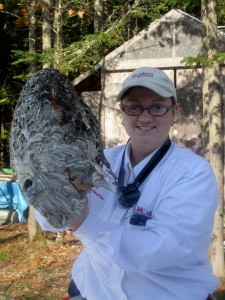
By: Matthew Campbell
As a pest management professional, it doesn’t surprise me that most people don’t know the difference between a paper wasp, a yellowjacket, a hornet, and a cicada killer. When one’s buzzing around our children or nesting around our home, our instinct isn’t to stop and wonder. But if you are curious, here’s how to tell them apart.
Yellowjackets
Have you ever seen a gray ball of papery horror hanging from your eave? It was probably a yellowjacket nest. Inside these nests are many tiers of combs and a single queen who lays an egg in each cell of each comb. All of the workers that emerge from these cells are female, and their job is to forage for food and water. While foraging, they are not usually aggressive – unless you swat at it. They’re most aggressive when their nest is disturbed.
Yellow jackets are similar in size and shape to the honey bee, but they are not nearly as hairy. Their back end (abdomen) is big and round, and they have yellow and black (mostly yellow) all over their body.
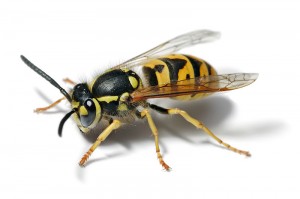
Bald-Faced Hornets
Some types of yellowjackets are also known as bald-faced hornets. They have big heads, pronounced mandibles, a white strip between their eyes, and white and black markings on their body. Their nests look like yellowjacket nests, but they are usually found in trees and bushes.
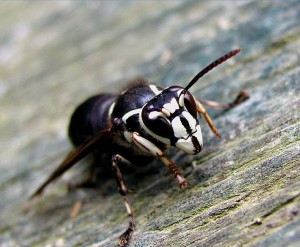
Paper Wasps
You’ve probably seen plenty of paper wasp nests along your eaves, under you deck, or around your window frames. Unlike yellowjackets, paper wasps do not construct a protective covering over their nest, so what you see is a single comb. These combs start off small with a few eggs, but they can quickly expand up to 8-inches in diameter if left alone.
Paper wasps are the mascot of wasps. They are what most people assume wasps look like. They have a long, sleek body with thin, brown wings, yellow legs, and a yellow and black body. They too are aggressive if you bother their nest.
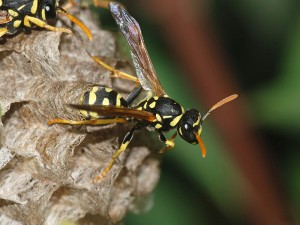
European Hornets
Unlike bald-faced hornets, European hornets are the only true hornets – they are members of the genus Vespa – in the United States. They’re about the same size as bald-faced hornets, but instead of white and black markings they have orange, brown, and yellow markings.
You will not likely see a European hornet nest because they prefer to build them in hollowed out logs, trees, or cavities in buildings. Just like their close relatives, European hornets are extremely aggressive.
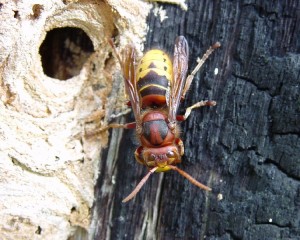
Cicada Killers
These wasps are large (about twice the size of a yellowjacket) and intimidating. Even their name – cicada killer – sounds ominous. Although females have stingers, they are docile and seldom sting people. Their stingers are primarily used to paralyze their prey (cicadas), which they then bring back to their burrow and implant their eggs on. Unlike other wasps, cicada killers are solitary and live alone.
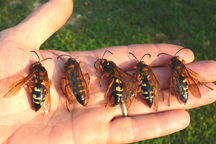
Don’t Risk It
No matter what kind of wasp is nesting around your home, do not attempt to treat them on your own. Late in the summer, wasps (excluding cicada killers) can be even more aggressive than normal toward anything that steps within 10-feet of their nest. Wasps can also sting multiple times. If you have wasp nests around your home, call in a professional to treat it. Modern can also keep them from building more nests with preventative treatments around your home where wasps like to nest.
Every season brings a new threat from pests. Be prepared. Modern Pest Services offers a HomeCare Green Program for year-round pest protection, as well as Wildlife, Termite, Mosquito, Tick, and Bed Bug Control Services. 1-800-323-7378.
